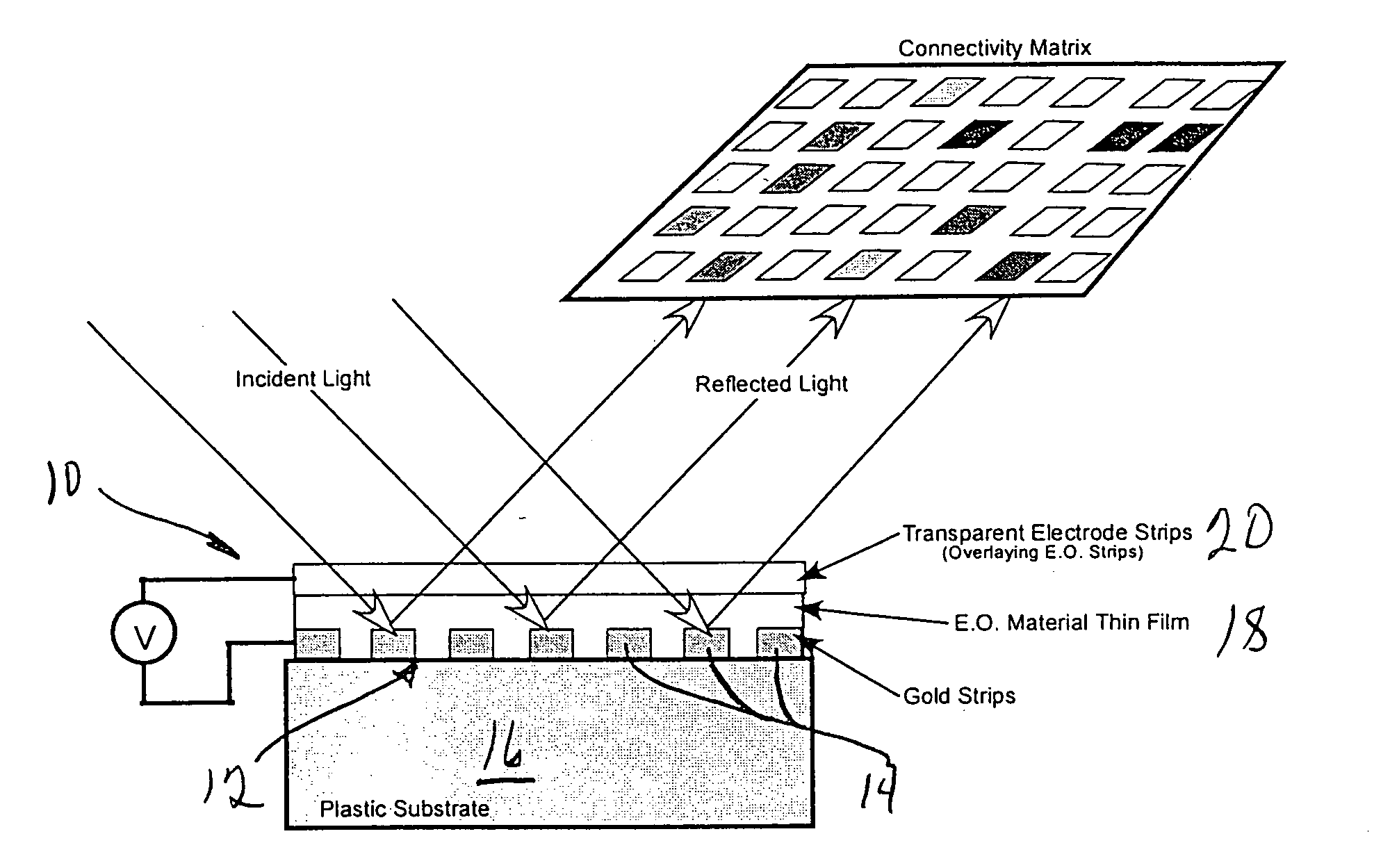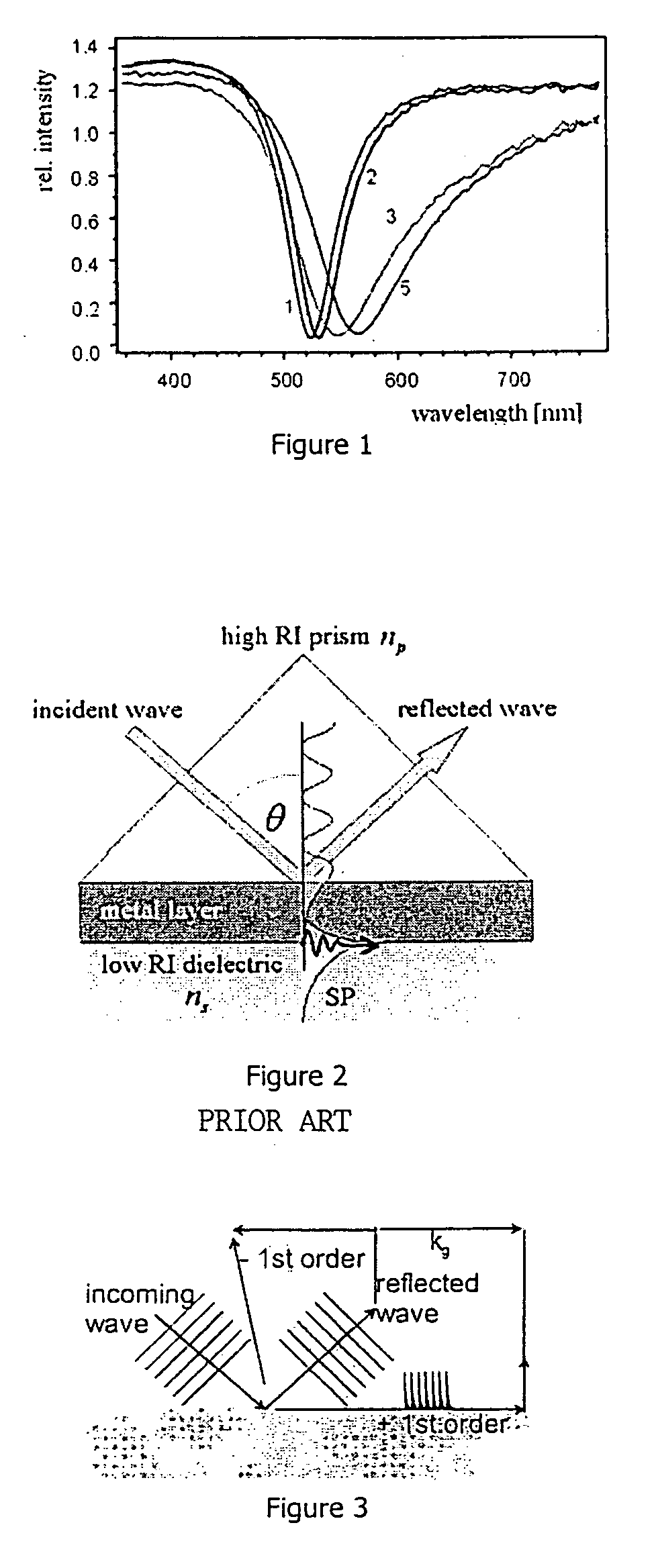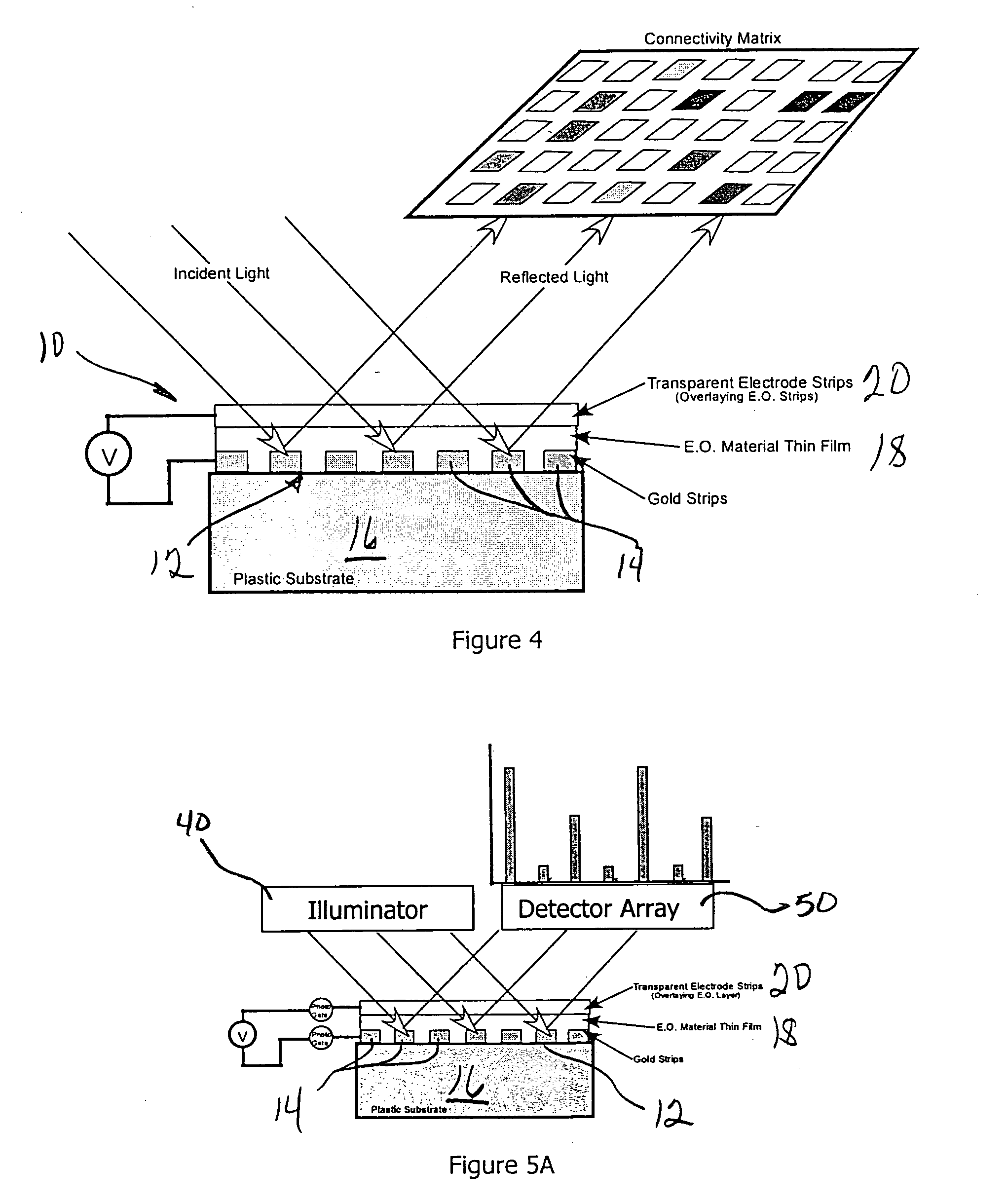Electro-optic array interface
a technology of optical arrays and interfaces, applied in the field of interconnections, can solve the problems of limiting the application of optical waveguide light guides, affecting the performance of optical waveguides, and unable to fully exploit the ghz range, and the challenge of routing signals off-chip and into the system in the ghz frequency range is expected to exceed the challenge of achieving on-chip performan
- Summary
- Abstract
- Description
- Claims
- Application Information
AI Technical Summary
Benefits of technology
Problems solved by technology
Method used
Image
Examples
Embodiment Construction
[0029] An embodiment of the electro-optic array interface 10 includes a diffraction grating 12 onto which a gold electrode array of strips 14 along the X-direction is deposited (the grating may be formed on a substrate material other than plastic, e.g. silicon or resin) as shown in FIGS. 4, 5A and 5B. In the context of the present invention, the diffraction grating 12 is a repeating pattern of parallel microgrooves on a dielectric substrate 16 such as plastic or silicon. The width of the gold electrodes 14 (exaggerated in FIGS. 4, 5A and 5B) should be of the order of the plasmon propagation length (˜20 μm). Above this gold array is deposited a thin film 18 of the EO polymer that forms the dielectric, and which should be at least 0.1 μm thick to maximize its interaction with the plasmon field. The inventors believe the thickness of the EO layer 18 can be optimized, with a goal of decreasing this thickness to allow the EO polymer layer 18 to be formed by self-assembly deposition techn...
PUM
| Property | Measurement | Unit |
|---|---|---|
| on-chip clock frequencies | aaaaa | aaaaa |
| on-chip clock frequencies | aaaaa | aaaaa |
| wavelength | aaaaa | aaaaa |
Abstract
Description
Claims
Application Information
 Login to View More
Login to View More - R&D
- Intellectual Property
- Life Sciences
- Materials
- Tech Scout
- Unparalleled Data Quality
- Higher Quality Content
- 60% Fewer Hallucinations
Browse by: Latest US Patents, China's latest patents, Technical Efficacy Thesaurus, Application Domain, Technology Topic, Popular Technical Reports.
© 2025 PatSnap. All rights reserved.Legal|Privacy policy|Modern Slavery Act Transparency Statement|Sitemap|About US| Contact US: help@patsnap.com



